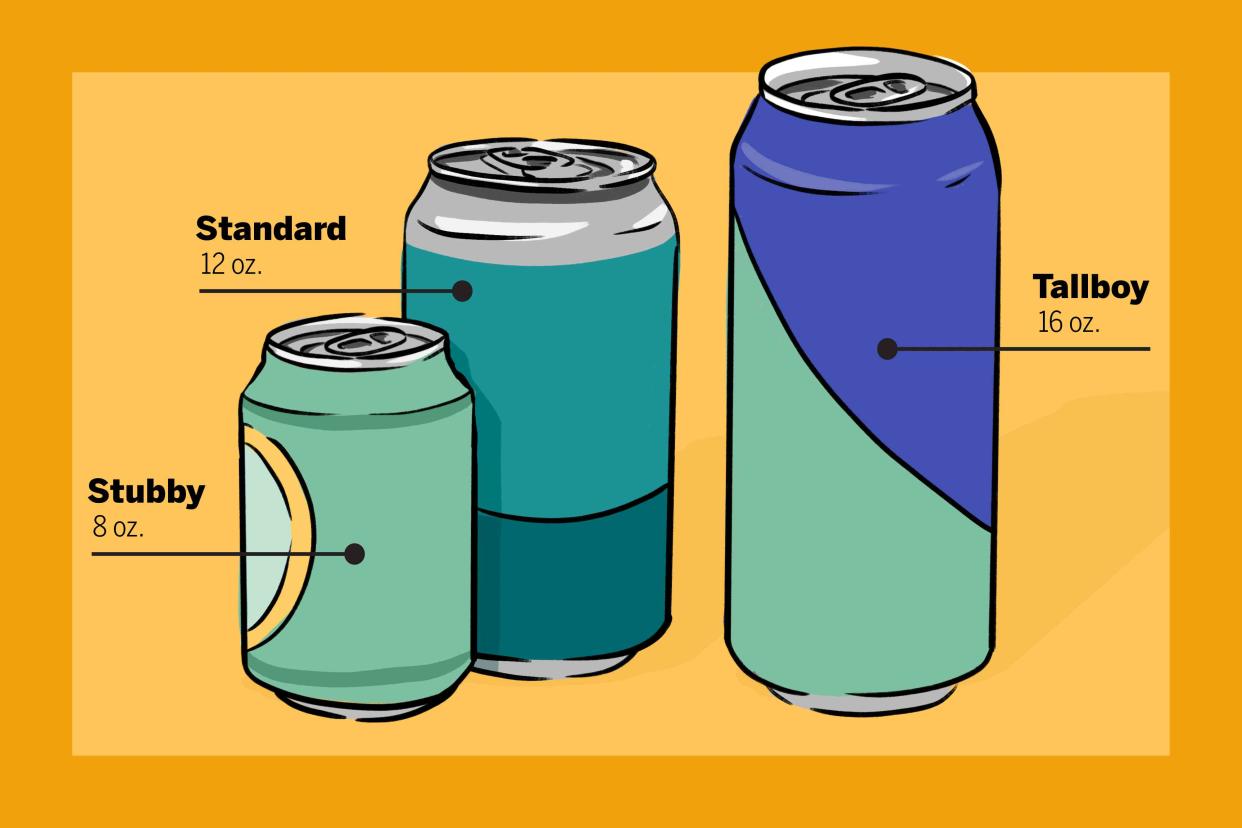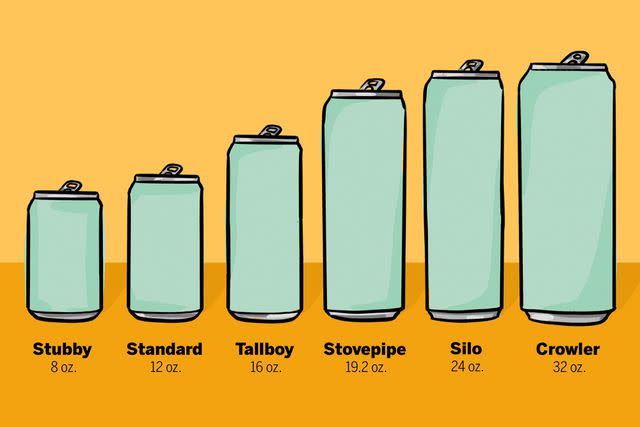A Guide to Beer Can Sizes, Why We Use Them, and What They're Called
Sure, maybe you enjoy a tallboy from time to time, but what else is out there? From stovepipes to pounders and crowlers, here's your cheat sheet to beer cans.

Sarah Maiden / Food & Wine
When it comes to packaged beer there’s no question that cans are the preferred option by brewers for a variety of reasons. Of their many benefits, size is an important consideration. There are several options beyond the familiar standard 12-ounce beer can. Thanks to the soda industry, some brewers have taken to using 12-ounce slim cans, while others offer aluminum cans that are shaped like a bottle and have a wide-mouth screw top.
There have also been advancements in canning in recent years. Micro canning lines and fillers can now fit into breweries of all sizes, and are available for smaller producers. There are also companies that will bring a mobile canning line to those breweries without canning facilities, to package their beer, including wild or funky ales.
As cans have proliferated in the beer space, so too have the labeling and aesthetic capabilities.
Larger breweries that order cans in bulk may have their labels directly printed onto the can. Smaller brewers, who often cannot purchase full trailers of cans at a time, have taken to adding wrap-around labels to blank cans, allowing for one shipment of cans to be used for multiple types of beer. (Those labels are best to be peeled off before recycling, however, as they are often made from vinyl, which can cause small fires in the smelting facilities and impact the waste stream.)
Related: Here’s the Real Reason Beer Comes in Aluminum Cans
From the pool to the beach, backyard to the campsite, there’s something appetizing about a fully iced cooler brimming with choices. And with the explosion of new (and old) beer can formats, it’s never been easier to find exactly the right beer in the right size for you.
To help break down the most common beer can sizes, here are six that you’re most likely to see, along with how much beer they actually contain and what they’re called.

Food & Wine
Stubbies and ponies: 8 ounces
These little cans are sometimes referred to as stubbies, and offer a half pint of beer, just right for a nightcap or when you just want a small taste. Some brewers have taken to putting their standard lagers or pale ales in this format, but others have embraced the high ABV side of things. Imperial stouts, bourbon barrel-aged barleywines, and other high-octane beers that once came in 22-ounce bottles — aimed to be suitable for sharing — are now popping up in single-serve cans.
Standard can: 12 ounces
The standard bearer of can sizes, this is the beer can most drinkers are familiar with. Usually available in six packs, and more often these days in 12, 15, 24 (also known as a case), and 30 packs, it’s the go-to size for lower- and moderate-strength beers.
Related: The Rise and Fall of Pilsner, the Original Pale Lager
Tallboy, pounder, or pint: 16 ounces
Often called pint cans, tallboys, or pounders, these have been popularized by the craft beer industry in recent years and are often sold in four-packs. The idea of a pint of beer is instantly recognizable thanks to the ubiquitous shaker pint or Boston glass seen behind bars across the country. Formatting a can around the standard volume of a draft pour has helped to bring the pub to wherever the drinker is located.
Stovepipe: 19.2 ounces
These stovepipe cans have become increasingly popular in the craft beer space, especially for breweries that distribute to convenience stores. Often seen as a single-serve option, data shows that when purchased, 19.2-ounce canned beers are consumed within hours of purchase. While the size may seem to be intended for moderate-ABV beers, brewers have taken to packaging higher-alcohol beers in the format. It’s a more bang-for-your-buck scenario.
Silo, or “tallerboy”: 24 ounces
Not as common, but still popular for some drinks, like hard tea, hard seltzers, and other flavored malt beverages, these hefty cans are a sort of party on the go. Look around at your next tailgate and you’ll be sure to spot this size in bulk.
Crowler: 32 ounces
For a long time, the best option for to-go beer from a brewery or taphouse was a growler, a glass jug that could be refilled time and time again. Growlers came in 64-ounce (half-gallon) and 32-ounce options and were a hit in the early days of the microbrew-turned-craft movement. As cans took off in the craft beer space, the crowler — a can growler — took off. At 32 ounces, it can be filled to order and then seamed shut to be brought home or elsewhere. Some brewing operations will purge oxygen from the crowler when filling it with beer, to extend its shelf life. Still, it’s a good rule of thumb to drink a crowler within a few days of it being filled.
For more Food & Wine news, make sure to sign up for our newsletter!
Read the original article on Food & Wine.












